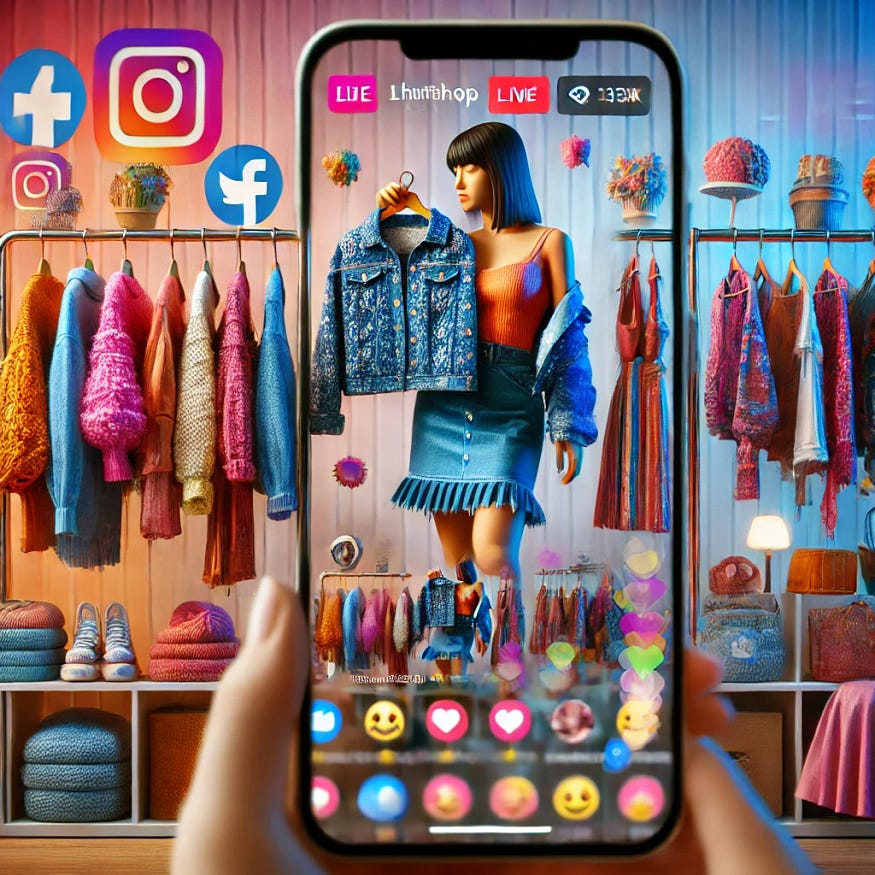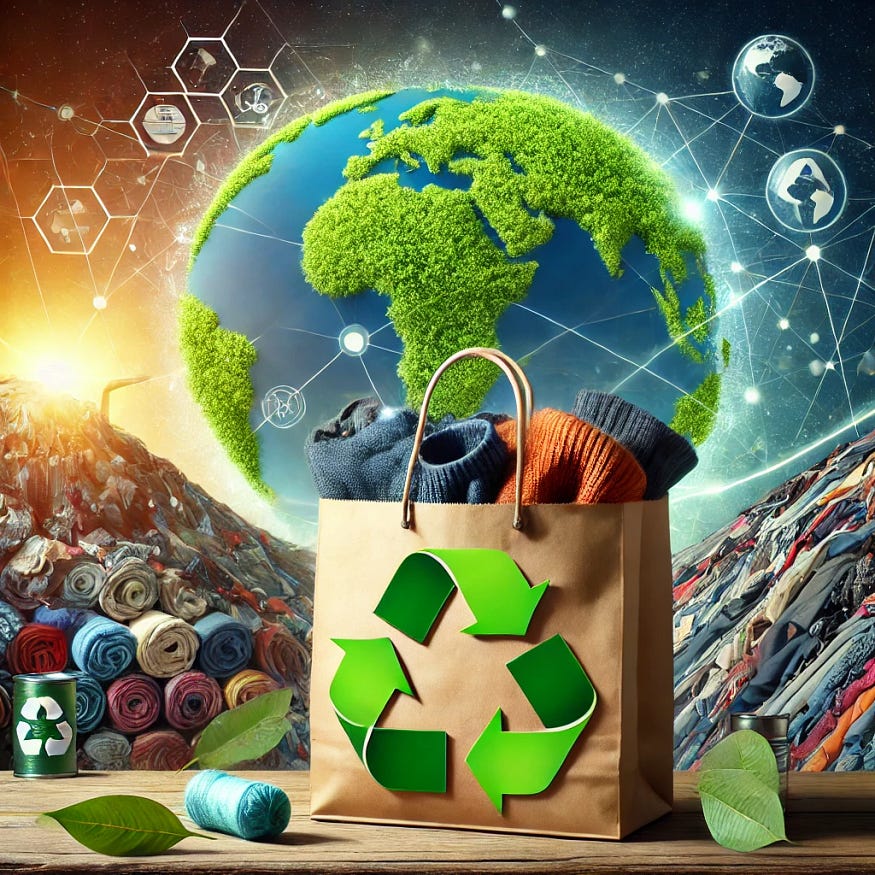
In recent years, live selling has emerged as a game-changing trend in the e-commerce space, revolutionizing the way people shop online. This practice has become particularly popular within the thrift shop community, where second-hand clothing and vintage items are sold at discounted prices. Live selling harnesses the power of social media and real-time engagement, creating a dynamic shopping experience that appeals to both buyers and sellers. Thrift shops, which were once considered niche, have now turned into booming businesses thanks to this trend, and they’re using social media influencers as key drivers of this shift.

Live selling is essentially the practice of showcasing products in real-time on platforms like Facebook Live, Instagram Live, and other streaming services. This strategy is highly interactive, allowing sellers to present their goods and engage directly with potential buyers who can comment, ask questions, and make purchases on the spot. Buyers often get a sense of urgency during these live streams as items are sold quickly, sometimes within seconds of being shown.
The format creates a personal connection between the seller and the audience, making it an engaging way to shop. The immediacy of the experience mimics an in-person shopping environment, which online consumers have long desired but lacked in traditional e-commerce. It’s no wonder that live selling has become a favorite tool for thrift shops to reach larger audiences and push their inventory.
Thrift shops have fully embraced live selling, leveraging it as a powerful platform to sell second-hand clothes at a discount. By tapping into the growing demand for affordable, sustainable fashion, these shops have gained traction, especially among younger audiences. To amplify their reach, thrift shops frequently collaborate with social media influencers, who often host live sessions to sell products from the stores. These influencers, usually with large followings, help thrift shops reach new customers and create excitement around the products being sold.
One well-known example is ThredUp, a major online thrift store that uses influencer partnerships to promote live selling events. Other thrift shops, such as Depop sellers and Poshmark boutiques, also capitalize on influencer-driven marketing. Influencers in these partnerships typically showcase items in a fun and engaging manner, making the experience enjoyable for viewers while encouraging them to purchase immediately.
For instance, Emma Chamberlain, a prominent influencer and vintage fashion enthusiast, has used her platform to highlight sustainable thrift fashion. Similarly, Claudia Sulewski, another influencer, has worked with online thrift platforms to promote live selling sessions.
The role of social media influencers in live selling is not just limited to presenting clothes; it’s also highly lucrative. Influencers can earn in various ways, including commission-based models, where they receive a percentage of each sale, or flat fees for hosting live streams on behalf of thrift shops. The earnings of influencers vary based on their follower count and engagement rates, but estimates suggest that micro-influencers (those with fewer than 100,000 followers) can earn anywhere between $1,000 to $5,000 per session. On the other hand, macro-influencers with over a million followers could make $10,000 or more per event. These numbers escalate when collaborations happen with high-end or exclusive vintage shops, which attract premium audiences.
Some influencers also negotiate brand ambassadorships with the shops, where they not only live-sell products but also promote the brand across their social channels. This mutually beneficial relationship helps the thrift stores tap into the influencer’s audience while providing influencers a steady source of income.
The practice of live selling by thrift shops isn’t just a business trend; it’s part of a larger sustainability movement. As consumers become more environmentally conscious, they are looking for ways to reduce their impact on the planet. The fashion industry is one of the largest contributors to global waste, with millions of tons of clothing discarded every year. The concept of “fast fashion” has exacerbated this problem, with cheap, mass-produced clothing ending up in landfills after being worn just a few times.
Thrift shops, by selling pre-loved clothing, directly contribute to the circular economy, where resources are reused rather than discarded. This practice helps to reduce textile waste and the carbon footprint associated with manufacturing new garments. Additionally, thrift shops promote the idea of “slow fashion,” which encourages consumers to buy fewer, higher-quality pieces that will last longer. Live selling allows thrift shops to highlight these eco-friendly values, making sustainability more accessible and attractive to a broader audience.
According to a report by ThredUp, if everyone bought just one used item instead of a new one in a year, it would save 5.7 billion pounds of CO2 emissions, the equivalent of removing half a million cars from the road for a year. This data underscores the significant environmental benefits of purchasing second-hand clothing, making it a viable solution to the fashion industry’s sustainability crisis.
While the boom in live selling and thrift shops is exciting and eco-friendly, it also raises important questions about the broader economic impact, particularly in developing countries. South East Asia, for instance, is home to some of the largest garment manufacturers in the world, including countries like Bangladesh, Vietnam, and Cambodia. The rise of the second-hand market and the practice of reusing clothes could potentially reduce the demand for new garments, affecting the livelihood of millions of workers employed in the textile manufacturing sector.
Countries like Bangladesh are heavily reliant on garment exports, with the industry making up a significant portion of the national economy. If more consumers shift to buying second-hand clothes, manufacturers may see a decline in orders, which could lead to job losses and factory closures. The ethical dilemma is clear: while the second-hand market promotes sustainability, it could have negative economic consequences for regions that depend on textile production.
The live selling trend also raises questions about global trade patterns and income distribution. As the second-hand clothing market grows, the economic benefits might shift from manufacturers in developing countries to resale platforms and influencers in more developed regions. This shift could exacerbate existing inequalities in the global economy.

The rise of live selling, especially in the thrift shop community, has undoubtedly transformed how people shop, offering an eco-friendly alternative to fast fashion and creating new opportunities for influencers and businesses alike. However, this shift also brings complex economic implications, particularly for countries reliant on garment manufacturing.
As the second-hand market continues to grow, it raises an important question: Is this shift ultimately good for the global economy? On one hand, it promotes sustainability and reduces waste. On the other hand, it threatens the livelihoods of millions of workers in developing countries who depend on garment production. Will the environmental benefits outweigh the economic costs, or should the world strike a balance that supports both sustainability and economic stability?
What do you think?